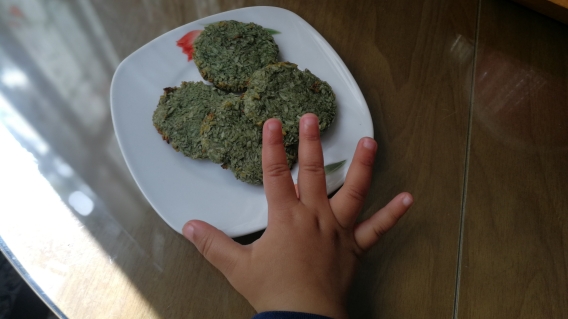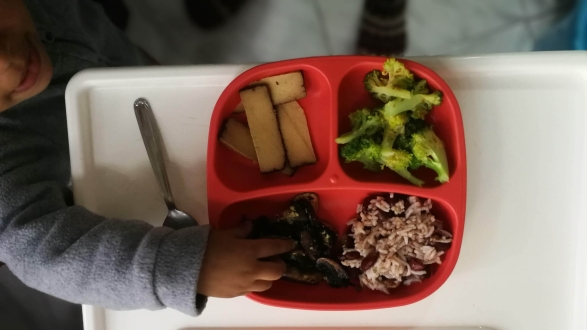
Like most new parents eager to start their baby on solids I scoured the internet for tips and ideas, taking time to sift through outdated information and recommendations. What I thought would be a smooth transition, turned out to be yet another opportunity for bad (often unsolicited) advice. I did my best to steer clear of online gurus and conspiracies, but it seems there really isn’t a consensus on how to raise vegan children.
The World Health Organization states that babies should be fed exclusively breast milk or formula for the first six months of their lives. “Thereafter, they should be given nutritious complementary foods and continue breastfeeding up to the age of two years or beyond.” In addition, water before six months puts them at risk for dehydration and malnutrition (WHO). The introduction of solids is referred to as “complementary feeding”, because it is intended to complement their milk focused diet from 6-24 months.
According to Kelly Mom, an excellent evidence based resource on parenting and breastfeeding, there are certain “developmental signs of readiness” that should be met before beginning solids. They include “sitting up well without support, loss of the tongue thrust reflex, willingness to chew, a developing pincer grasp, and interest in meal times”. Babies are born with an immature digestive system, meaning that starting solids before it’s appropriate could jeopardize their health. It doesn’t hurt to wait!

Despite all of this easily accessible information, our pediatrician, who thankfully retired recently, handed us a pamphlet at our five month check up encouraging us to begin weaning right away. In it was information on the exact amounts of infant cereal, orange juice, and chamomile tea to give to our premature baby. We were shocked to find out just how common these old school ideas truly are. When I sought out support, I discovered that my experience wasn’t isolated. Doctors all across the country still recommend solids at four and a half months and other practices that can compromise an otherwise healthy gut and breastfeeding relationship.
It goes without saying that I was thrilled to have my daughter share in on the lovely ritual that is family meal time, but it was important to do so while maintaining the integrity of her digestive system. The American Academy of Nutrition and Dietetics offers current information on how to go about this transition, and it was a very useful resource to have in the beginning. Traditionally, families tend to start with cereals, but we opted for fruit first then common allergens like peanuts (peanut butter) and soy. Later, we emphasized iron rich foods like beans, tofu, quinoa (porridge), hemp seeds, and simple green smoothies with kale. I would make a nutrient dense broth and freeze it in cubes to use in purees and soups.

We went slowly, one new food at a time, then two, and so on, always in tune with baby’s needs. It’s wild how far we’ve come. At 27 months, my toddler has a love-hate relationship with almost every food, but overall she’s a good eater. Her current favorite foods include anything with chickpeas, asparagus, tomato,broccoli, grapes, blueberries, “salad”, and bread. She loves bread! Hopefully this helps at least one family feel more prepared as they step into this exciting new chapter. Good luck and happy eating!
*We supplemented with vitamin D drops from birth (prescription) and vitamin B12 at 6 months. We are also mindful of her fiber intake and incorporate refined grains.




